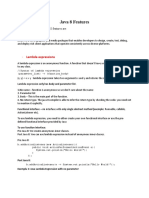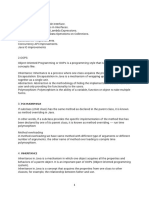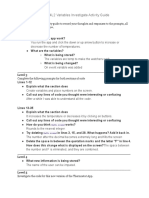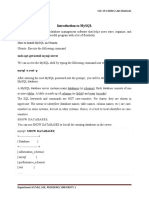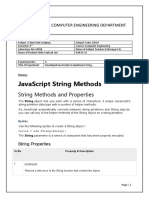0% found this document useful (0 votes)
9 views24 pagesOOPs Unit 3 Notes
The document discusses various new features in Java, including abstract methods, interfaces, functional interfaces, method references, and the Stream API. It also covers enhancements like default and static methods in interfaces, Base64 encoding, try-with-resources, type annotations, and the Java Module System. Additionally, it highlights features introduced in recent Java versions, such as diamond syntax, local variable type inference, switch expressions, text blocks, records, and sealed classes.
Uploaded by
Anil KaushikCopyright
© © All Rights Reserved
We take content rights seriously. If you suspect this is your content, claim it here.
Available Formats
Download as PDF, TXT or read online on Scribd
0% found this document useful (0 votes)
9 views24 pagesOOPs Unit 3 Notes
The document discusses various new features in Java, including abstract methods, interfaces, functional interfaces, method references, and the Stream API. It also covers enhancements like default and static methods in interfaces, Base64 encoding, try-with-resources, type annotations, and the Java Module System. Additionally, it highlights features introduced in recent Java versions, such as diamond syntax, local variable type inference, switch expressions, text blocks, records, and sealed classes.
Uploaded by
Anil KaushikCopyright
© © All Rights Reserved
We take content rights seriously. If you suspect this is your content, claim it here.
Available Formats
Download as PDF, TXT or read online on Scribd
/ 24










